
John McAlpine performs composer Tom Johnson's beautiful piano cycle "Counting Keys", using mathematical progressions to create the structure of its 5 movements; plus 8 parts from his "Organ and Silence for Piano"; and two other compositions using mathematical processes.
In Stock
Quantity in Basket: None
Log In to use our Wish List
Shipping Weight: 3.00 units
EU & UK Customers:
Discogs.com can handle your VAT payments
So please order through Discogs
Sample The Album:
John McAlpine-piano
Click an artist name above to see in-stock items for that artist.
UPC: 4011778041610
Label: Edition Wandelweiser Records
Catalog ID: EWR 0901
Squidco Product Code: 21821
Format: CD
Condition: New
Released: 2009
Country: Germany
Packaging: Cardstock 3 page foldover
Recorded: Radio Bremen, Sendesaal, 14-16.2.2007
"Most composers who use mathematics to construct music do not intend it to be heard. Tom Johnson does. When he performed his piano cycle "Counting Keys" in Cologne in 1986 he began each piece by counting out its structure in numbers so that the audience could follow the logic of the music.
A particularly appreciative member of that audience was John Cage. One might wonder what the famous advocate of indeterminacy could find interesting in this exactly determined, highly predictable music, until one considers his favourite definition of art as the imitation of nature in her manner of operation. Much of what we see in nature, whether flowers, sea-shells, ice-crystals or patterns of growth and decay, is determined by mathematical processes.
The first piece in "Counting Keys" begins with a single high note. This is repeated followed by a 2-note cluster played twice, the whole being repeated followed by a 3-note cluster played three times, the process being repeated chromatically down the keyboard ending in the lowest register with a 12-note cluster played twelve times. The keys are literally counted. The effect is like an avalanche, beginning with a snowflake and ending in a pile of rubble at the foot of a mountain.
Over the years, the mathematics of Tom Johnson's music has become increasingly complex. "Organ and Silence", completed in 2000, is a cycle of 28 pieces for organ answering the challenge of composing music consisting more of silence than of sound. It is also a compendium of the compositional techniques he had developed up till then, from simple procedures like subtraction or permutation to the more sophisticated operations he refers to as automata and self-similar melodies. A consequence of the many long pauses it contains is the slowing down of the mathematical processes, making them much easier to hear. "Organ and Silence for Piano" is a reworking of eight of these pieces for piano made by the composer and myself in 2002.
"Tilework for Piano" is one of a series of pieces for solo instruments utilising the mathematics of arranging tiles in a single line along a wall to produce interlocking repeated patterns. In musical terms, if each tile is a note, motive or, as in "Tilework for Piano", chord, this means creating counterpoint with one voice. Imagine a row of 15 coloured tiles without gaps. There are 5 different colours; 3 of each. The same-coloured tiles are arranged in 5 equally-spaced interlocking triplets, each triplet having a different spacing. There is only one way to do this and this provides the basic structure of "Tilework for Piano". The triplets are first presented singly. Then every combination of 2 triplets is presented twice, every combination of 3 triplets three times and so on, until finally all 5 triplets together are presented five times.
The mathematical term "block design" comes from combination theory and refers to the distribution of a fixed number of elements into blocks of a fixed size according to specific combinatory preconditions. In "Block Design for Piano" the blocks are a sequence of 330 different ascending 6-note arpeggios. Their notes are taken from a fixed 12-note chord in such a way that every combination of four particular notes occurs 10 times in 10 different arpeggios. The 330 arpeggios are presented in 30 groups of eleven. Unlike most of Tom Johnson's compositions, the mathematical logic is not easily discernable. In an introductory text he sent me shortly after completing the piece, he commented on the difficulty of predicting the course of the music and wrote: "As I listen, I can imagine that I am hearing something derived from nature." Indeed, like the waves washing up on a beach, no two them identical yet all following the same unfathomable laws, this music has the inevitability and timelessness of the processes of nature.
Tom Johnson has written extensively about his compositional techniques. His writings can be found at www.tom.johnson.org"-John McAlpine
Artist Biographies
Related Categories of Interest:
Compositional Forms
Avant-Garde
Piano & Keyboards
Solo Artist Recordings
New in Compositional Music
Staff Picks & Recommended Items
Track Listing:
1. Counting Keys: I 1:19
2. Counting Keys: II 1:53
3. Counting Keys: III 2:02
4. Counting Keys: IV 3:59
5. Counting Keys: V 2:00
6. Organ And Silence For Piano: I Before The Silence 3:14
7. Organ And Silence For Piano: II Around The Silence 3:39
8. Organ And Silence For Piano: III Within The Silence 4:22
9. Organ And Silence For Piano: IV Through The Silence 2:29
10. Organ And Silence For Piano: V Against The Silence 1:23
11. Organ And Silence For Piano: IV For The Silence 3:30
12. Organ And Silence For Piano: VII Toward The Silence 4:33
13. Organ And Silence For Piano: VIII Into The Silence 2:28
14. Tilework For Piano 8:13
15. Block Design For Piano 18:00
Compositional Forms
Avant-Garde
Piano & Keyboards
Solo Artist Recordings
New in Compositional Music
Staff Picks & Recommended Items
Search for other titles on the label:
Edition Wandelweiser Records.



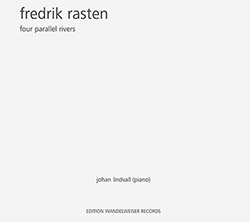
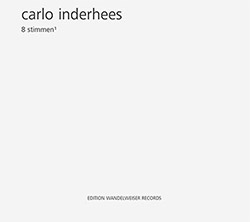







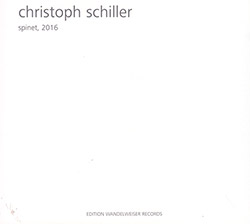










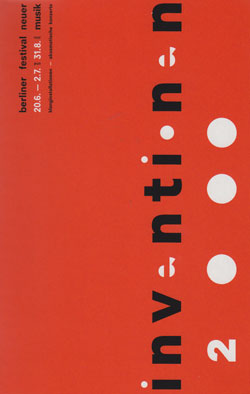
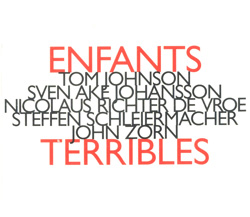

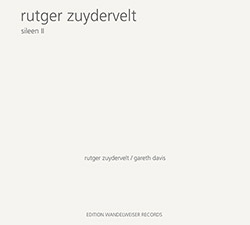



![Guy, Barry / Ken Vandermark: Occasional Poems [2 CDs]](https://www.teuthida.com/productImages/misc4/34849.jpg)
![Novoa / Carter / Mela Trio: Vol.1 [VINYL]](https://www.teuthida.com/productImages/misc4/35236.jpg)


![Elephant9 : Mythical River [VINYL]](https://www.teuthida.com/productImages/misc4/34624.jpg)
![Evans, Peter (Evans / Eldh / Black): Extra [VINYL]](https://www.teuthida.com/productImages/misc4/35279.jpg)

![McPhee, Joe: Straight Up, Without Wings [BOOK]](https://www.teuthida.com/productImages/misc4/35454.jpg)
![Jeck, Philip: rpm [2 CDs]](https://www.teuthida.com/productImages/misc4/35455.jpg)













![Barker / Parker / Irabagon: Bakunawa [VINYL]](https://www.teuthida.com/productImages/misc4/35533.jpg)
![Blaser, Samuel / Marc Ducret / Peter Bruun: Dark Was The Night, Cold Was The Ground [VINYL 10-inch]](https://www.teuthida.com/productImages/misc4/35492.jpg)








![Warren, Kenny (Warren / Hoffman / Ellman): Sweet World [VINYL]](https://www.teuthida.com/productImages/misc4/35451.jpg)




![Blake, Ran / Dave Knife Fabris: Live Amsterdam 2006, First Visit [CD + POSTCARDS]](https://www.teuthida.com/productImages/misc4/35275.jpg)













![DNS: Taking Big Bites Of The Khandas Three Cafes Deep [2 CDs]](https://www.teuthida.com/productImages/misc4/35334.jpg)




![Cleaver, Gerald: The Process [VINYL]](https://www.teuthida.com/productImages/misc4/34966.jpg)




![Alva Noto: HYbr:ID II [VINYL 2 LPs]](https://www.teuthida.com/productImages/misc4/35201.jpg)

![Baron, Derek / Luke Martin: Distinct and Concealed [CASSETTE + DOWNLOAD]](https://www.teuthida.com/productImages/misc4/35079.jpg)

![Lyle, Erica Dawn : Colonial Motels [CASSETTE + DOWNLOAD]](https://www.teuthida.com/productImages/misc4/35080.jpg)









![Sanna, Claudio: Compositori Sardi Contemporanei II [2 CDs]](https://www.teuthida.com/productImages/misc4/35317.jpg)







![Zurria, Manuel: Fame di Vento [3 CDs]](https://www.teuthida.com/productImages/misc4/35167.jpg)

![Granberg, Magnus / Nattens Inbrott / Skogen: Holde Traume, Kehret Wieder! [2 CDs]](https://www.teuthida.com/productImages/misc4/35038.jpg)
![Frey, Jurg: Outermost Melodie [2 CDs]](https://www.teuthida.com/productImages/misc4/35039.jpg)

![Pavone, Jessica: Reverse Bloom [VINYL]](https://www.teuthida.com/productImages/misc4/34895.jpg)




![Modney (Modney / Wooley / Gentile / Roberts / Pluta / Symthe / ...): Ascending Primes [2 CDs]](https://www.teuthida.com/productImages/misc4/34852.jpg)









![Elephant9 with Terje Rypdal: Catching Fire [VINYL 2 LPs]](https://www.teuthida.com/productImages/misc4/35355.jpg)
![Deerlady (Obomsawin, Mali / Magdalena Abrego): Greatest Hits [VINYL]](https://www.teuthida.com/productImages/misc4/34876.jpg)




![Haino, Keiji: Black Blues [2 CDs]](https://www.teuthida.com/productImages/misc4/35109.jpg)



![Surplus 1980: Illusion of Consistency [CD]](https://www.teuthida.com/productImages/misc4/35069.jpg)
![Staiano, Moe: Away Towards the Light [VINYL + DOWNLOAD]](https://www.teuthida.com/productImages/misc4/35037.jpg)



![Caveira (Gomes / Sousa / Abras / Ferrandini): Ficar Vivo [VINYL]](https://www.teuthida.com/productImages/misc4/34643.jpg)
![Gregg, J. J. / David Van Auken: Lunar Prairie [CD w/ DOWNLOAD]](https://www.teuthida.com/productImages/misc4/34611.jpg)

![Coultrain: Mundus [VINYL]](https://www.teuthida.com/productImages/misc4/32439.jpg)
![Mattin: Songbook #6 [VINYL]](https://www.teuthida.com/productImages/misc4/27317.jpg)
![Punkappella: Wake Up [7-inch VINYL]](https://www.teuthida.com/productImages/misc4/17519.jpg)
![Residents, The: WARNING: UNiNC.: Live And Experimental Recordings 1971-1972 [VINYL 2 LPs]](https://www.teuthida.com/productImages/misc4/31521.jpg)
![Coultrain: Phantasmagoria [VINYL]](https://www.teuthida.com/productImages/misc4/30142.jpg)
![Lennon, Sean Ono: Asterisms [VINYL]](https://www.teuthida.com/productImages/misc4/34517.jpg)

![Coley, Byron: Dating Tips for Touring Bands [VINYL]](https://www.teuthida.com/productImages/misc4/17906.jpg)

![Lost Kisses: My Life is Sad & Funny [DVD]](https://www.teuthida.com/productImages/misc4/lostKissesDVD.jpg)